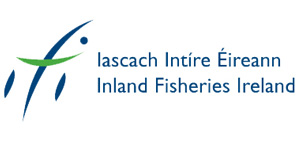Fish Stock Survey of Glenade Lough, September 2022
Glenade Lough is situated at the top of the Bonet catchment in county Leitrim, in a valley between the Arroo and Benbulben Mountain ranges, approximately 9km north-west of Manorhamilton (Plate 1.1, Figure 1.1). The lake has a surface area of 73.3ha, a mean depth <4m and a maximum depth of 11.5m. It is categorised as typology class 6 (as designated by the EPA for the Water Framework Directive), i.e., shallow (<4m), greater than 50ha and moderately alkaline (20-100mg/l CaCO3).
Glenade Lough has been designated as a Special Area of Conservation (NPWS, 2013). The underlying geology of the lake is composed of carboniferous limestone and shales. The lake is naturally eutrophic, a habitat listed on Annex I of the E.U. Habitats Directive. The water is clear, well aerated and relatively nutrient poor, and the shoreline is generally stony or sandy (NPWS, 2013). There is a diverse range of pondweeds present in the lake, which include Potamogeton praelongus, P. pusillus, P. lucens and P. natans (NPWS, 2013). Glenade Lough is home to a large population of the native, white-clawed crayfish (Austropotamobius pallipes), a species listed on Annex II of the E.U. Habitats Directive. The lake is also home to the plant species quillwort (Isoetes lacustris) and slender naiad (Najas flexilis), a species also listed on Annex II of the E.U. Habitats Directive (NPWS, 2013). Surrounding the lake are areas of deciduous woodland which includes species such as hazel (Corylus avellana), ash (Fraxinus excelsior), alder (Alnus glutinosa), oak (Quercus petraea), beech (Fagus sylvatica), rhododendron (Rhododendron ponticum) and sycamore (Acer pseudoplatanus) (NPWS, 2013).
Glenade Lough has been surveyed on four occasions since 2007 (2007, 2010, 2013 and 2016) for the national Water Framework Directive fish monitoring programme (Kelly and Connor, 2007 and Kelly et al., 2011, 2014 and 2017). During the 2016 survey, perch was found to be the dominant species present in the lake followed by roach. Relatively small numbers of pike and eels were also captured during the survey.
This report summarises the results of the 2022 fish stock survey carried out on the lake using Inland Fisheries Ireland’s fish in lakes monitoring protocol. The protocol is WFD compliant and provides insight into fish stock status in the lake.
Topics: Lake Surveys 2022 , Glenade Lough |
